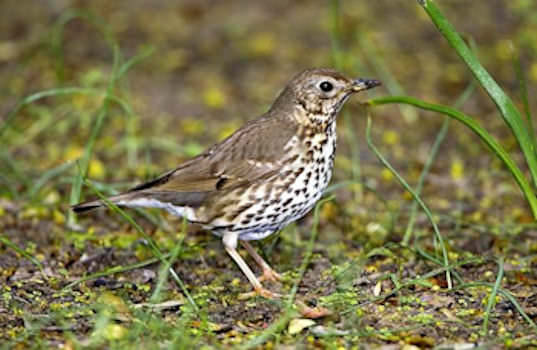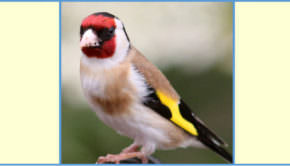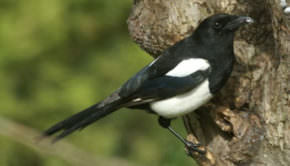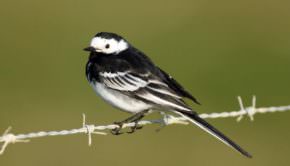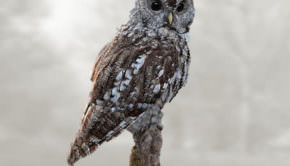Bird of the Month: The Song Thrush
The Song Thrush is smaller than either a mistle thrush or blackbird and is less upright when standing. The male and female are similar with warm brown upper parts, pale buff underparts and dark speckles (often arranged in lines) which look like arrows pointing towards the head. The belly is almost white with fewer, smaller dark spots. As with other woodland, ground feeding birds it has relatively large eyes. Song thrushes can be found in woods, hedgerows, parks and gardens, in fact wherever there are bushes and trees. The breeding season starts in March and lasts until August as they usually have 2 or 3 broods a year. The female builds a neat cup shaped nest low down in any suitable cover, including trees, shrubs, among creepers on walls and ledges and on the ground in thick vegetation. It is made out of grass, twigs and moss which are cemented together and thickly lined with mud and dung mixed with saliva. It can take her 3 weeks to complete. She then lays between 3 and 5 eggs which she alone incubates. Both birds then feed the young, mostly on worms but slugs, caterpillars and even fruit in dry weather when the ground is too hard to access worms, are included. In late summer snails become a critically important part of the bird’s diet too when other more favoured prey is not available. The young fledge after 13/14 days and are often left in the care of the male while the female prepares for the next brood. Song Thrushes are both resident and migratory. Some birds in the north migrate southwards in the autumn, usually overnight, while southern ones go as far as France, Spain and Portugal. Other birds from Scandinavia and Benelux then join the remaining British birds. The song thrush sings all winter in urban areas because of the street lights. They have a clear, flute-like song which becomes richer and more complex as the birds get older. Phrases chosen from their repertoire of about 100 are repeated several times and are often prolonged with the loudest parts being heard over half a mile away. On average song thrushes live for 3 – 4 years with only 20% of fledglings and 60% of adults surviving to breed the following spring. The population declined by 59% between 1970 and 1998 with evidence suggesting that agricultural intensification and changes to woodland management resulted in less food available and fewer nesting sites. Improved drainage also made the ground harder making it more difficult for birds to extract the worms. Our gardens with shrubs and creepers are now an important habitat for them. They are on the RSPB red endangered list meaning they are the highest conservation priority needing urgent action.
Did You Know?
• A century ago song thrushes were one of Britain’s commonest birds, even outnumbering blackbirds.
• Hunting migratory song thrushes has long been a popular sport in southern Europe and is still legal in France and Spain.
• They are one of the few British birds to eat snails, cracking them open on a favourite anvil (usually a rock).
• Thrushes’ nests are rarely used by the cuckoo as it is thought the thrush recognises the cuckoo’s egg as different and rejects it.
• Mavis is the colloquial name for both the male and female song thrush. It appears in Chaucer and comes from the French word mauvis and may be of Celtic origin.
https://www.wildstrawberrylodge.com/dressing-for-the-weather-fishing-with-the-elderly/

